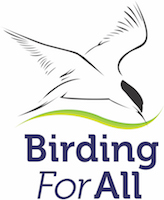GOB 1
GOB 1 – Whatever Happened to Birding Etiquette?
This article first appeared in Birds Illustrated
I can remember when the response to “Anything about?” Was something along the lines of – “There’s a Spotted Redshank over by the left end of the scrape and we had a couple of Black Terns earlier…” These days that might still be the response, especially if you are acquainted with the respondent, but it seems to me it is far more likely to be “not a lot” or just “hrumph” or, indeed, just silence.
The first of these responses is far more informative than it might appear. As you gaze out over the scrape admiring the Spotted Redshank it might begin to dawn on you that what pleases you is a mere month tick to the grumpy young man who is now walking back to his car anxiously looking at his pager every 100 strides. If you then settle down for a couple of hours watching the late summer birds come and go to the freshwater lagoon and reed-bed there may well be a succession of other birders coming and going; spending a minute or two noting the ‘spot red’ before hurrying away, or perhaps asking if the Lesser Yellowlegs has been seen at all in the last two days, and, if so, where was it.
You may be joined for longer periods by quiet speaking watchers whose lips can just be seen moving as they silently count the lapwings or whose ears cock as the distant reel of a Grasshopper Warbler or ping of a Bearded Tit break the tranquillity of the scene. They will probably just nod as they arrive and leave so quietly whilst you are scanning the lagoon that you will not even note their passing. There may be that middle-aged couple with shiny green boots and shiny green optics who argue over whether the immature Dunlin is a Curlew Sandpiper or even a Pectoral Sandpiper. They may smile if you gently explain why size precludes the latter and beak the former. Chances are these dudes will slip away taking their embarrassment with them.
What is happening here? Is this really a sign of the general breakdown of our society? Country versus town, black v white, young against old? Not in my view. What’s going on here is merely the manifestation of the polarity of our pastime writ large by the sheer numbers of new birding converts. If you really want to know what’s going on take a look at the recently published A Bird in the Bush by Stephen Moss. His excellent and readable social history of birding tracks the change from a minority pursuit to a growing avi-business, from the quiet pastime of country parsons, to the hobby for competitive executives who bird by corporate jet.
As the numbers of people looking at or for birds has grown so it has become more obvious that not all enjoy it in the same way.
There are those who twitch from tick to tick collecting new birds with ID skills honed only to divide sub-species in case there is a split and their list can grow. From them an argot has emerged which reflects the competitive nature of the ‘sport’. Gripping off their rivals, dipping on a rarity, or getting crippling views of a PG Tips [Pallas’s Grasshopper warbler] or CCC [Cream coloured Courser], or finding that the PG Tips is actually a mere ‘tart’s tick’ of a gropper [Grasshopper warbler]. The very truncated nature of the bird names is evidence of how fast they must run to get to 400 before their friends.
There are specialists like those whose love of gulls make them able to tell a black and white and grey gull from a black and white and grey one. Or who can call a soft plumaged petrel in the fog from a wave-tossed trawler where chum and regurgitated breakfast break against the gunnels.
Then there are the ‘dudes’; weekend birders in green wellies and Barbour jackets, coming out of town to breathe our good country air. New to this lark they may have had rarities pointed out to them so have seen a Western Sandpiper but look excitedly through their pristine Collins Fieldguide to look up a Dunlin; saw a Firecrest at the obs but are awestruck by their first displaying Goldcrest.
Some grumpy old men in the birding world are time-served; they have spent a lifetime counting geese and making field-notes, religiously enumerating their tetrad or turning out in all weathers to monitor a Constant Effort Site – amateur ornithologists without which our knowledge would hardly grow. Why are they grumpy? Because they love birds and wild places and resent the intrusion of others… they would no more think of reporting a rarity on their patch to a bird line than they would forget to submit a record of it to the county recorder at the end of the month.
There are also some birders, and it pains me to acknowledge this, that are arrogant bores whose heads must be a burden to carry around all day. Their rudeness and superiority make it hard for new birders, and anyone who doesn’t quite fit their world view (like having the temerity to be a child or a woman). [I once spent two weeks with a group who did not share their daily sightings because, day one, after the less experienced birders had listed the species they thought they had seen that day, one bright spark intimidated them all by saying “I’m only going to count birds that actually occur in this area”…. I’ve often wondered whether he ‘counts’ vagrants that turn up in the UK. I remember another well known birder who I heard telling his acolytes that an over-wintering hoopoe had a broken beak so could not feed and would no doubt be dead the next day… the bird stayed three months before leaving for warmer climes that spring.]
Then there are the hoi-polloi; plebs like me who don’t quite know where they fit. Middle-aged men with life lists that would embarrass a teenaged twitcher. Blokes who work a patch but have been known to twitch a bird or two in the past and may even be tempted by a county tick or a world lifer. Birders who can distinguish a Black Kite from a Marsh Harrier or a Richards’ Pipit from a lost lark purely because they’ve been lucky enough to holiday where Black Kites clean the city streets and Richards’ Pipits are the only pipits to be seen; but who cannot tell a Bonxie from a Bald Eagle when its a mile out at sea during a November storm.
I suspect that we are in a majority and that there will be many like me who mourn the passing of birding etiquette and who want to turn back the tide and re-introduce the right to be wrong and the camaraderie of knowledge shared. I am heartily sick of the pontificators and prognosticators; those who laugh at birders whose skills are as green as their wellies and those who cannot be civil to strangers. I abhor the breakers of fences and destroyers of dry-stone walls in pursuit of a rarity and those who believe their right to take a picture gives them licence to push to the front or push a bird along the dunes until it is beyond the range of my arthritic limbs.
I have a dream that the day will come again when it is OK to call out a bird and be wrong without that mistake haunting you to your grave; a day when we once again tolerate varying views and rejoice in diversity. A day when the glory of the day and the beauty of the bird is once again held to be more important that the scarcity of the species.
Bo Beolens
13th October 2004





